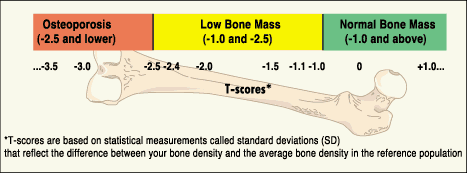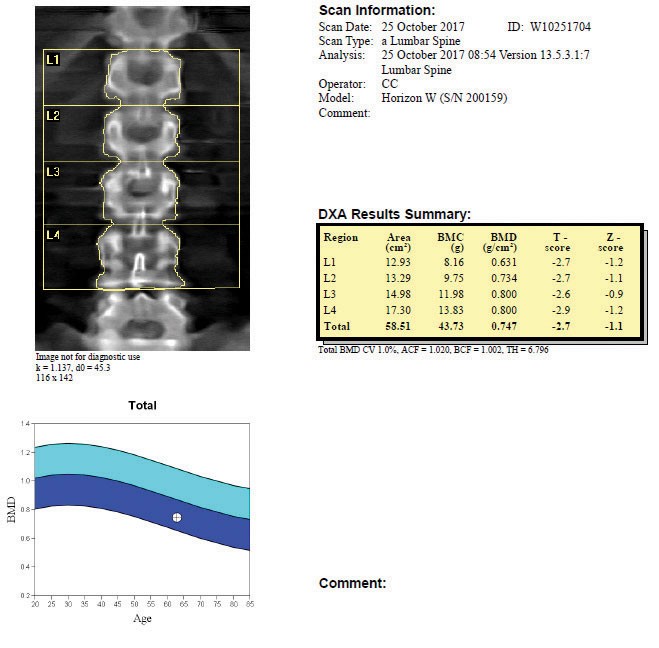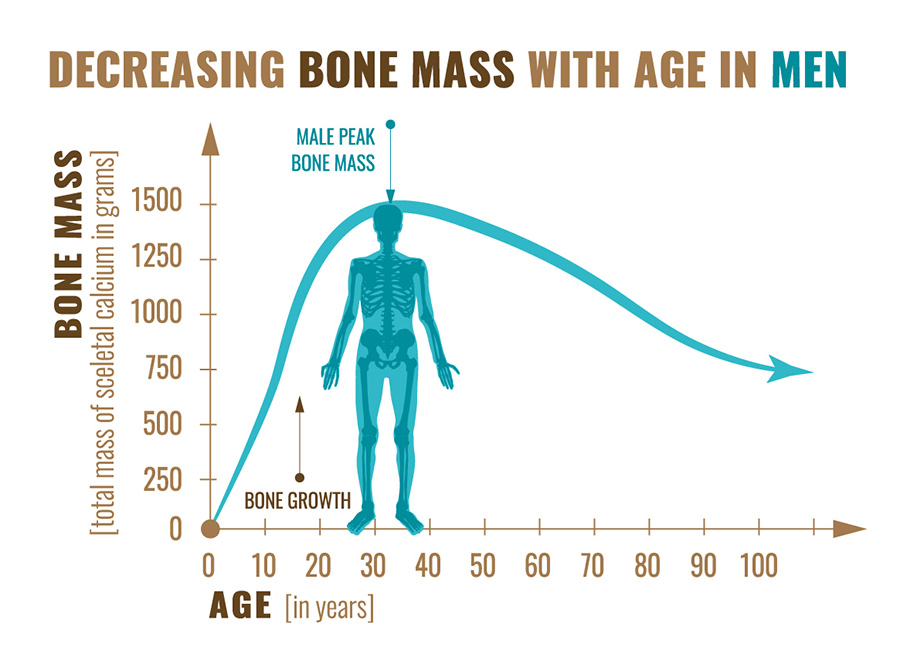

Remember, in the hip there are two diagnostic areas: the Femur Neck, and the Total Hip. This error, included too much shaft of the femur that will result in a false negative of approximately 10% increase in bone density that will be included in the total score of the hip.

This is where the bottom line should have been placed. Note the red line at the bottom of this image. In this particular scan, what have is the following:ĭiagnostic area, top and bottom lines: the top line is good, but the bottom line is not placed correctlyĪlso noteworthy they did not include an independant T-score of the Femoral Neck Analysis/line placement: Errors can be made if too large or too small an area is drawn, resulting in an incorrect bone density measurement. The lines that you see surrounding the bones from top to bottom demarcate the analyzed area. They will often give you a CD with the images on them.
Bone density test results full#
In the case you see here I seriously doubt that there is any bone pathology.Īlways make sure that when you get a bone density test that you get the full report, not just a two-page written report. Certain conditions such as Paget's disease or other conditions also need to be ruled out.

The technician should notice this, and take proper action: T-score L1-L4: Note that L1, 3 and 4 are within a similar range.For example: if there is a spur that would be left out, or if there was a fracture, osteoarthritis, or surgery, these vertebra, too, would be deleted/left out of the density calculation. The bone density machine initially selects the lumbar area to be analyzed, but then the technician should make sure that the machine did the job correctly, and change or override those lines when appropriate. Analysis – line placement: The lines in the DXA machine computer demarcating L1-L4 need to be drawn properly.Lumbar alignment: the technician should make sure the patient’s spine is in the middle of the scanning area, and straight.The bone density machine sets the lines automatically to begin with, but machines can be wrong! How the technician should be setting up the scan:

The technician is responsible for setting up the patient properly and adjusting the diagnostic lines in the computer if necessary. The changes will be made, and the imaging facility will issue a new report. Frequently I send a short letter to a facility requesting changes, or give it to my patient and they will take it to the imaging facility. The only time it is necessary to redo a scan on a patient is when the technician did a poor job with body placement. By the way, both errors that you see displayed below can be corrected without having a scan redone. As you will see, in both DXA's on the next page, one of the lumbar spine and one of the femur, these types of errors can result in either reporting increased bone density or decreased bone density when a future or previous test is compared to it, unless the regional error is corrected. Where errors really come into play is when comparison tests are done. In fact, getting your first test will certainly help you and your doctors on the path to determining whether or not you have a bone density problem. This article should not make you avoid being tested. Bone density is an amazing tool, and a very important piece of the puzzle when looking at bone health. Both DXA's had basic errors that could have been caught, if anyone was paying attention. In this article, my aim is to share with you two cases that came across my desk last week.


 0 kommentar(er)
0 kommentar(er)
